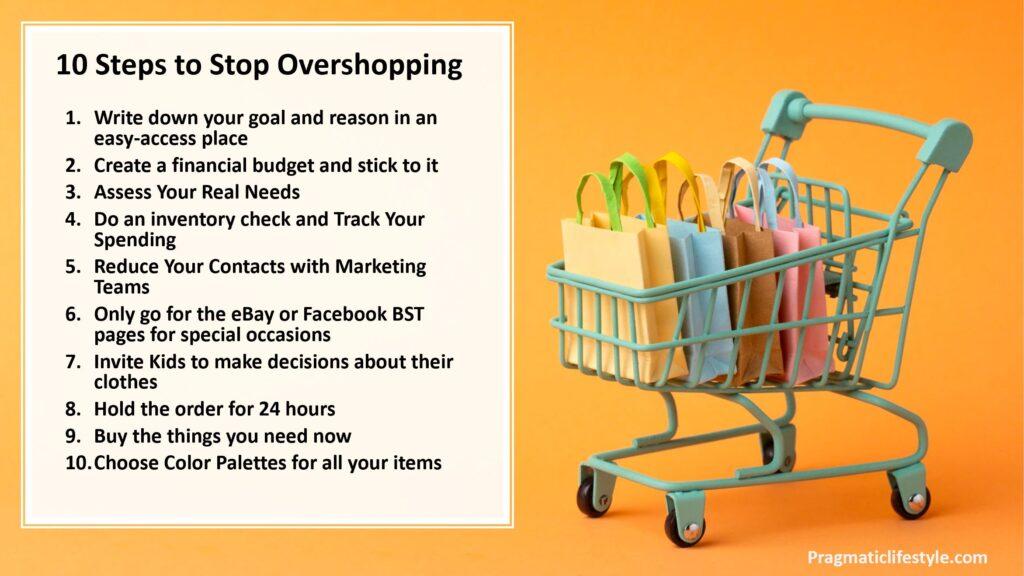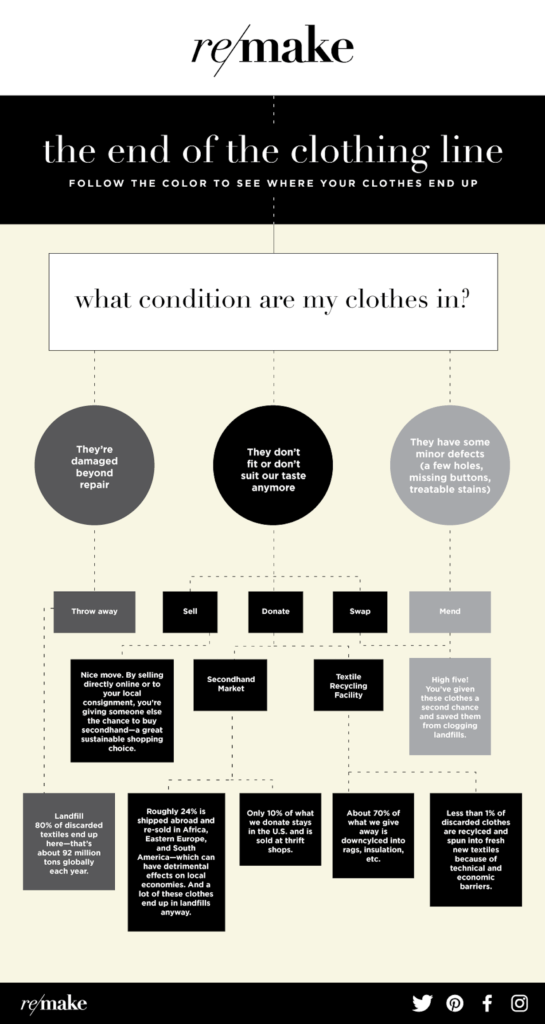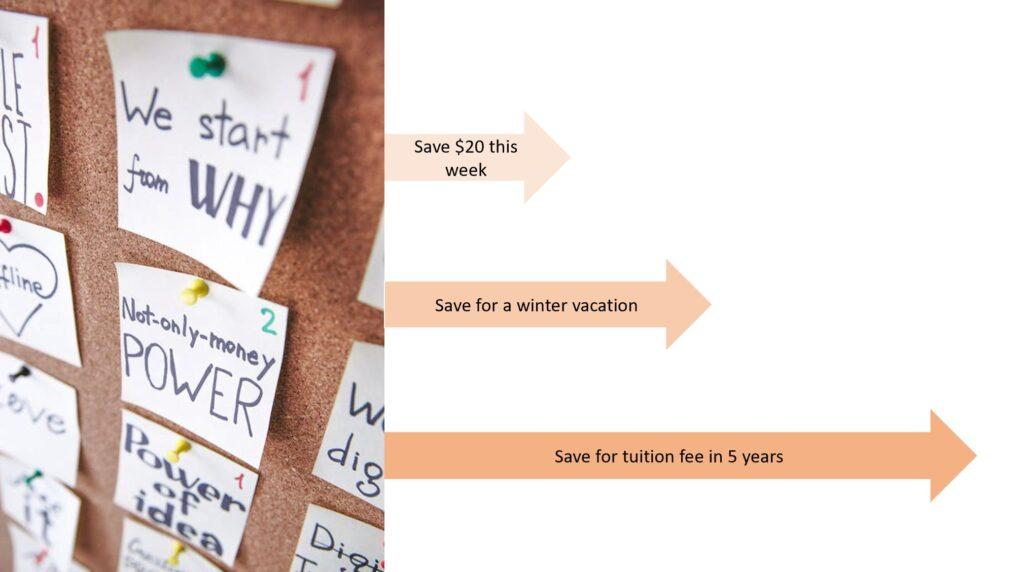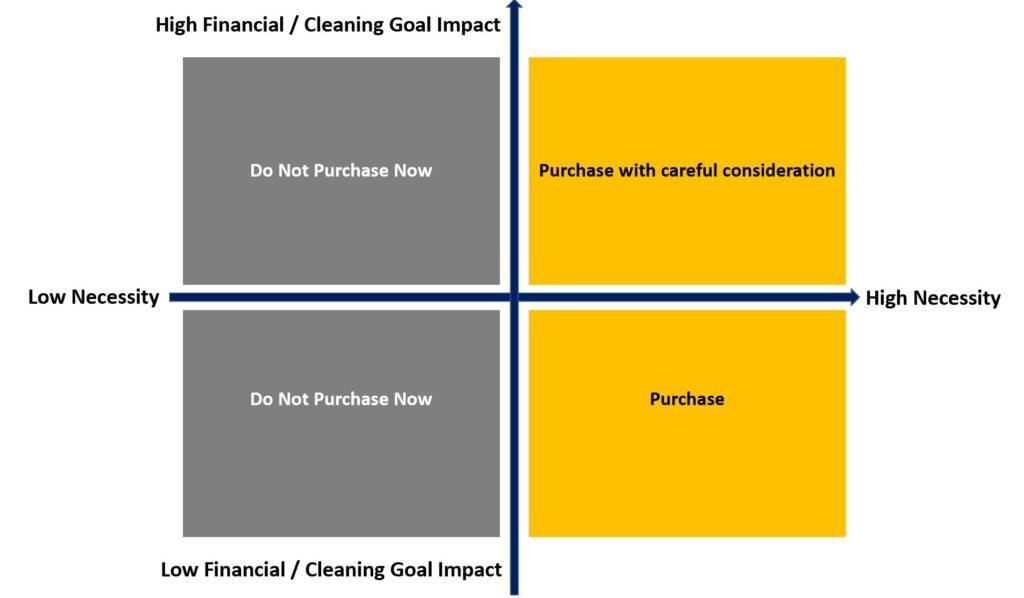November is my crazy shopping month every year, it is hard to stop when the “double 11” and “black Friday” is approaching. As a mother of two, this is the moment I normally buy kids clothes and toys for the whole year, gifts for teachers and friends, store them somewhere and take out as gift later in the year. However, this year, I manage to step back from overshopping behavior and shopping in a rational and pragmatic way. It helps me save lots of browsing time, money and the most important, avoid many waste. I am not a minimalist, and I do believe we need to treat ourselves with some useless but entertaining items. Here I summarized 10 Steps that I use for avoid overshopping. If you also had the idea that you may shopping too much and like to reduce, it will definitely help you!

Table of Contents
The Wake Up Call
My 8-year-old son was doing his chores – folding his clean clothes and putting them back in his cupboard. It took him around 30 min to finish the work. Afterward, he came to me and said, “mom, do you have a minute? Can you stop buying me new clothes?”
Wow, it is surprising that I am actually on the shopping page for their winter clothes and Xmas gifts.
“Dear. Can you tell me why? Don’t you like new clothes?”
“No, I like them. However, It costs too much time to fold them. I’d rather spend my time playing, reading, and resting. “
“Sorry, Yojan, I did not think about how much work you need to do. I will ask you first next time.”
“Mom, thanks for all the nice clothes you give me. I will tell you when I need new clothes.”
This is the moment I realized that I probably go overshopping.
Related Reading:
- 7 Fun and Effective Ways of Teaching Young Kids to Do Chores
- 14 Toy Organization and Storage Ideas for Kid’s Room
Why Do People Go Shopping?
In today’s world, we are shopping for much more than necessities. People are shopping for leisure, for business, or to enjoy life. The shopping center became a multi-function place with cinemas, restaurants, and other entertainment areas. In terms of motherhood, every mom’s dream is to dress up their children, and many moms say that their children are better dressed than themselves.
When we recall our shopping behaviors, they can be divided into several types:
- Compulsive shoppers. They are shopping to distract their feelings or release pressure. For example, I will go shopping to get over the emotions if I have a tough day.
- Trophy shoppers. They intend to find the perfect accessory for outfits.
- Image shoppers. They focus on the visible products, e.g., the brands, etc.
- Bargain shoppers. They buy stuff because they see it is a good deal and cannot miss it.
- Collector Shoppers. They have to buy the complete product sets or different colors of the same clothing.

Impulsive Buying
According to Ryan Howell, an associate professor, our survival instinct leads us to buy impulsively. It’s similar to going hunting. We notice something we like or want and get it. Even if we don’t need it, we’ll catch it if we don’t reencounter it. This is why, when we shop online, companies notify us when an item is out of stock to put pressure on us to make the purchase!
Expected transformation
When we buy things, we expect them to impact our lives positively. This is due to advertisements claiming that if we purchase the item, our lives will change to the ad. Influencers appear to have a lifestyle that many aspire to, whether through traditional television advertisements or social media. We believe that by purchasing the products, we will be able to live a life similar to theirs. This is why brands spend millions of dollars on influencer marketing and social media.
The Effects of Overshopping
There is nothing wrong with shopping. However, when shopping starts cluttering your house and impacts your financial situation, it brings more harmful efforts into our lives (debt, stress, and busyness). It is the time to call overshopping and learn how to stop it.
Overshopping Wastes Your Money
It’s easy to think, “it’s only $5,” etc. However, the small number can quickly add up without your awareness. If you’re saving for a vacation or retirement, it can take away money that could have gone toward those goals. As a result, achieving your financial goals will take longer if you have them.

Overshopping Creates Clutter and Waste Your Time
Have you ever spent 30 minutes looking for the clothes in your memory or putting them back in the wardrobe? You’re adding to the clutter in your closet and home by purchasing things, and they take time to organize and find later on, which means less room for the items you use and enjoy.
You can also link it to money by doing quick math. If your hourly wage is $40, the extra hour you spend browsing the site or cluttering your wardrobe costs the same.
Overshopping Causing Environmental Impact
Every year, around 11.3 million tons of textiles are wasted (85% of the total) and end up in landfills in the United States. This equates to approximately 81.5 pounds (37 kilograms) per person annually and about 2,150 pieces per second across the country. Many items are only worn seven to ten times before being discarded. Moreover, the dyeing and finishing process is responsible for 3% of global CO2 emissions and over 20% of water pollution.
The Fact About Donated and Recycle Clothes
Many organizations and retailers, such as Goodwill and H&M, offer places for donating or returning. You may think it is environmentally friendly. However, most of the items end up in landfills, mainly because they exceed the organization’s capacity or cost more to put the clothes in circulation than throw them away. In the U.S., only 2.6 Million Tonnes of Returned Clothes Ended Up in Landfills in 2020.

10 STEPS to Avoid Overshopping
If you sense you are overshopping and would like to stop it, here are some steps to avoid overshopping works for me and my family.
1. Write down your goal and reason in an easy-access place
Why do you want to avoid overshopping? Do you wish to increase your saving? Less clutter? More time? Less decision fatigue? Your reason may be different or include all of the above reasons. Try to be specific, write it down, and keep your note visible. Then you can see it whenever you want to shop.

2. Create a financial budget and stick to it
You won’t know how much you can or want to spend without a budget. Moreover, you can also set financial goals to help you make the budget. It can start from small and short-term goals, like ‘save $20 this week’, medium goals as ‘save for a luxury vacation.’, and long-term goals as ‘university fund for kids.’ Implementing this steps will help you keep focusing on something to avoid overshopping.

3. Assess your real needs
Do you know how many things you need? Of course, it is case by case on personal and family habits. Regarding clothes, the easiest way is to figure out a maintainable laundry routine. If you wash laundry weekly, you better prepare eight sets of clothes + 2 sets for an emergency. Think like you’re packing for vacation.
Many tools can help us on the market for this steps to avoid overshopping, e,g, the concept of a capsule wardrobe can help us to prepare any suitable outfit with a collection of essential classic items and a few seasonal pieces. My approach is assess the item based on necessity and impact on my goals. I only buy the necessary items. If the impact on my goal is high, I will pass the item. For example, the oversized stuffed toys since it brings too much burden for cleaning.


4. Do an inventory check and Track Your Spending
It’s not uncommon for people to buy the same things because they have forgotten what they already have. Are you aware of how much you’re spending per month? Most people either don’t track or often lose track. By monitoring spending, you’ll notice your spending patterns and act on them.
5. Reduce Your Contacts with Marketing Teams
Our life is full of advertisements, and one of the most important steps to reduce overshopping is to break up with the seller’s marketing teams. Once they have your email address, they won’t leave you alone!
- Unsubscribe from their emails
- Unlike/Unfollow Retailers on Social Media
- Tell Retailers to Stop Sending Snail Mail

6. Only go for the eBay or Facebook BST (buy sell trade) pages for special occasions
Sometimes eBay or Facebook groups can be the perfect places to look for specific clothing items since the condition is listed. You can usually get fantastic deals! Most of the time, it’s trustworthy since there are guidelines that both sellers and buyers have to follow. However, I will only use these places for the one-time off clothes, such as Halloween Costumes and Xmas sweaters, simply because it is lucky to find the right size and it costs too much time to communicate back and forth.
7. Invite Kids to make decisions about their clothes
Involving kids in the shopping process for their clothes have many benefits. Not only will they be happier with the clothes when they help pick them out, but they’ll also get a chance to observe all the strategies you use to save money on them. Letting your children pick out their clothes builds self-esteem much more important than matching.
If you are buying online without trying them out, it is better to stick with several familiar brands since the size, color, and textures are consistent.
Don’t use credit cards if you are shopping in the location and want to let the kids get a better sense of how much you’re spending. Spending with cash feels more tangible like you’re spending real money that requires your real-time, sweat, and effort to earn.
Related Reading:
- 15 Ways of Earn Money as Stay-at-Home Parent
- 10 Tips for Household Money Management
- Explain Money to Children, 11 Reasons Why it is Useful
- How Young is Too Young to Understand Money?
- Money Lessons for Kids? Values, Saving, Spending and Giving
- 10 Mistakes Parents Make in Teaching Kids about Money
- How to Teach Kids About Money at Every Age?
- 7 Ways of Teaching Money Concept to Children
- 10 Best Ways to Teach Kids About Money
8. Hold the order for 24 hours
If you are shopping online, keep all the items in your cart for 24 hrs. Let your brain sleep on it and consider if it is a “must-have.” Think in detail about when and how you will use the product. Also, this steps let you think for a moment about the benefit that you do not have the items, such as more savings or the freedom of having less debt to avoid overshopping.
9. Buy the things you need now
Have you bought a winter jacket during the summer sale?
We often imagine the moment that we use the product. For example, “My son can wear the shoes the next summer,” and “I can wear them after I lose 5 pounds”. In the end, you will find they are still sitting in the closet two years later, and it is either too small or out of fashion.
Before making a purchase, ask yourself if you’ll be using the item shortly. If the answer is no, then pass it.
10. Choose Color Palettes for all your items
The idea of simplicity is your new item needs to fit with the existing environment. It would help if you had a balance of colors in wardrobe and home to achieve this. Most people have two foundation colors and some other ones.
It’s best to choose your foundation colors first. Most people choose earthy or matted ones, perhaps yellow, khaki, grey, or denim blue.

Common Mistakes of Avoid Overshopping Steps
Do not go oversize: While buying kids’ outfits, it is vital to check if you have selected the proper size. Sometimes you buy for the next season to get a discount, but the clothes might not fit anymore and are already past the free return period.
Quality over Quantity: Low-quality clothes would end up in the trash after a couple of washes, and it will end up wasting money to buy more.
Store your favorite stuff: It seems familiar that people rarely use their favorite stuff and don’t want them to get dirty. Instead, they buy cheaper things for daily use. Of course, they are less satisfying to have the more inexpensive items.
Spending much on an occasional item: Similarly, many people spend a fortune on an outfit they wear in special occasions than the entire year on weekly clothing, such as workout wear, jeans, or sneakers. The more thoughtful method is to put your money where can use and enjoy everyday.
Do not buy because of the freebies: “Free” is a magic word in marketing. We often buy the item because we like the gifts or feel obligated to say yes. Especially with the slogan “purchase 599 to get 99 discount” or “free shipping from $50”. Ultimately, we buy many things we did not even think about initially.
Nothing in life is free, you always pay in the end
Wayne Static
Final Thoughts from Pragmatic Lifestyle
Overshopping is an easy habit to develop. Shopping for kids’ clothes and toys is so fun and addicting. It’s easy to think your kids need more than they do. If you sense you are overshopping and want to create more money and time in your busy life as a parent, simple life will help you. Once you figure out the reason and set a goal, it is just a matter of how you will achieve it.
You can help yourself kick impulsive spending habits and reclaim your money and closet with some planning and simple fixes. Here’s a quick rundown of steps to avoid overshopping:
- Write down your goal and reason in an easy-access place. You will know why you start buying less and continually remind you.
- Make a budget plan, stick to it, and ensure you are spending the amount you can afford.
- Make a list of wardrobe or household items you need; don’t buy anything that isn’t on the list.
- Reduce communication with retailers by unsubscribing from their emails, unfollowing them on social media, and canceling coupon/catalog mailings.
- Involve your kids while purchasing clothes or toys for them. Actual cash can give your kids a sense of money instead of the number on the credit card.
- Delay your purchase for 24 hours to think about whether you need the item or just impulsive feeling.
Have you ever struggled with overshopping or impulse purchases? How did you avoid it? How many steps you took? Please let me know in the comments!
About Me
Hi, there. I am Lin. Together with my husband and two kids, we live in the beautiful Netherlands in Europe. I am dedicated to self-development, creating quality time for the whole family, and fully supporting kids with their potentials and possibilities with all I have learned from engineering, MBA, and 10+ years of working experience in the energy sector.


